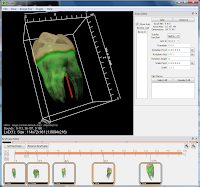For windows I like the very sleepy profiler. On Mac OSX Apple provide the Saturn profiler (See: Saturn profiler user guide).
To demonstrate we can try compiling a small program:
#include <math.h> #include <stdio.h> #include <saturn.h> //include the saturn profiler double func1(double x) { //do some maths return sin(x)*cos(x); } double func2(double x) { //do some more maths return pow(x,3); } int main() { double x=0; double z=0; startSaturn(); //being profiling for (x=0;x<100;x+=0.01) { z+=func1(x)+func2(x)*tan(x); } stopSaturn(); //end profiling printf("z:%f\n",z); //make sure compiler doesn't throw our computations away return 0; }
Now we need to compile it with profiling support:
g++ x.c -finstrument-functions -lSaturn -m32 -O2
Some common problems include:
Undefined symbols: ___cyg_profile_func_enter
This comes from the -finstrument-functions option : it requires a special hook for each function - this is provided by saturn, so you must link with it.
ld: warning: in /usr/lib/libSaturn.dylib, file is not of required architecture Undefined symbols: _startSaturn
Again, either you forgot -lSaturn, or you have remembered it, but are using a 64 bit OS/chip. Specify '-m32' to force 32bit mode.
If it all compiled succesfully, then start Saturn and choose 'Saturn', 'Launch Process'. Then select the executable (eg: a.out) in the dialog box.
Press OK, and Saturn will run and profile your program, and generate a folder with the profiler output data. (eg: Saturn_profile_a.out.000)
You can then select the data file to view the output, and Saturn will display a call graph and the amount of time spent in each function. Now the fun of optimizing can begin. Enjoy!

























